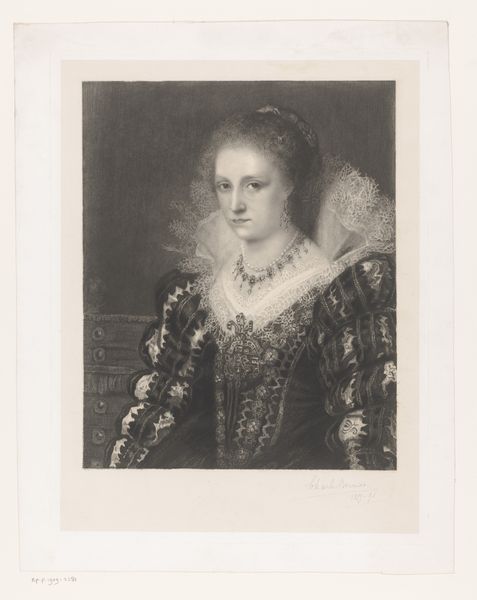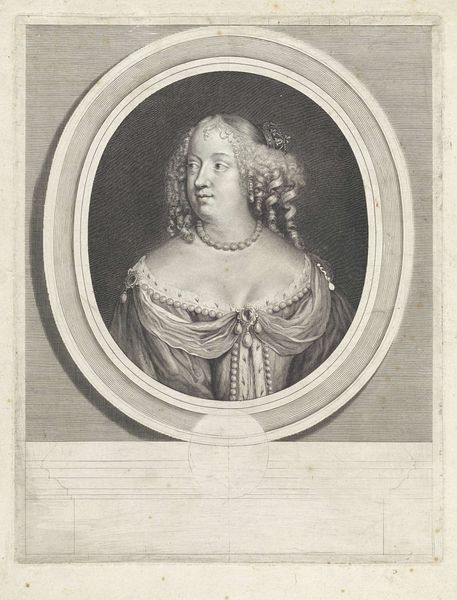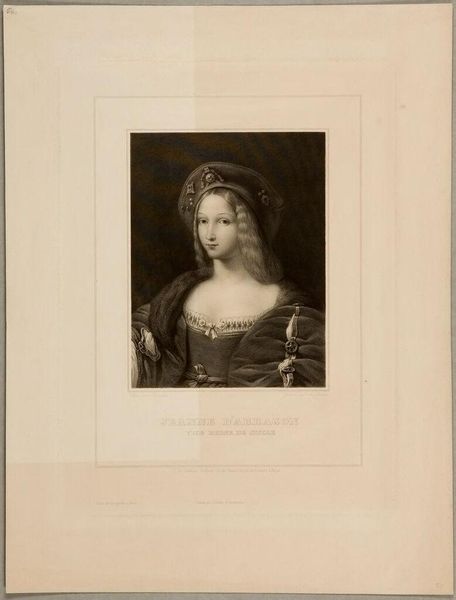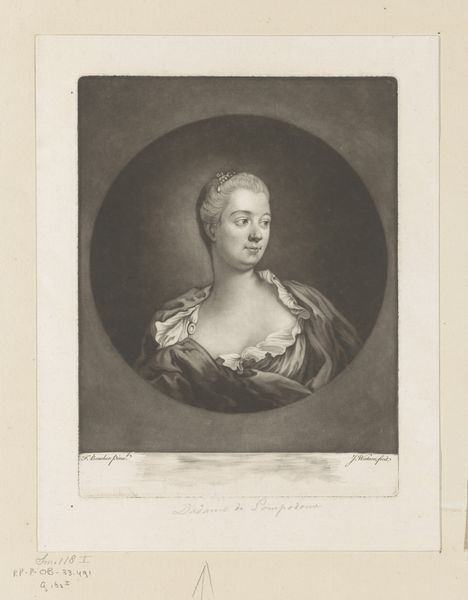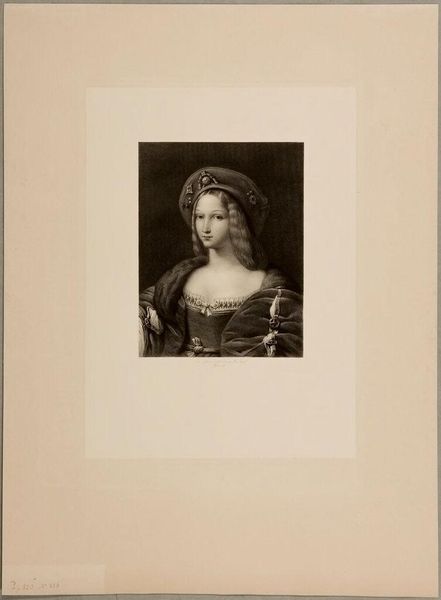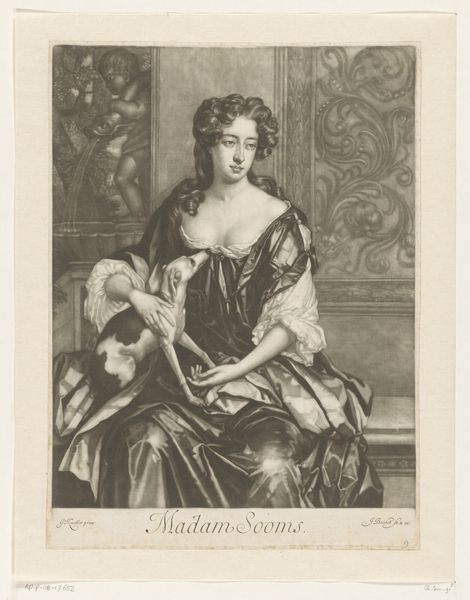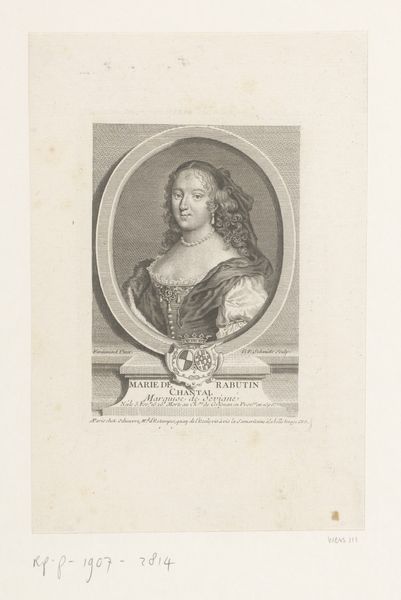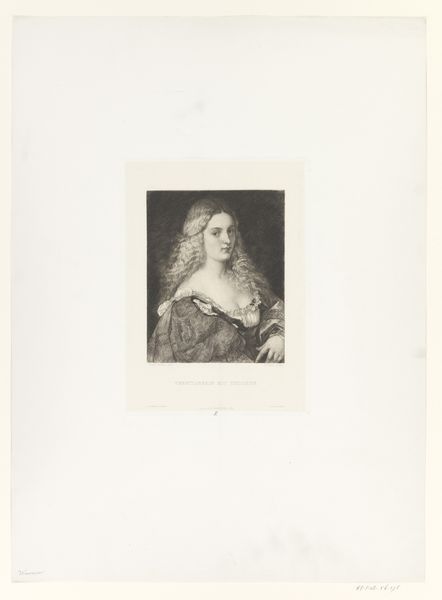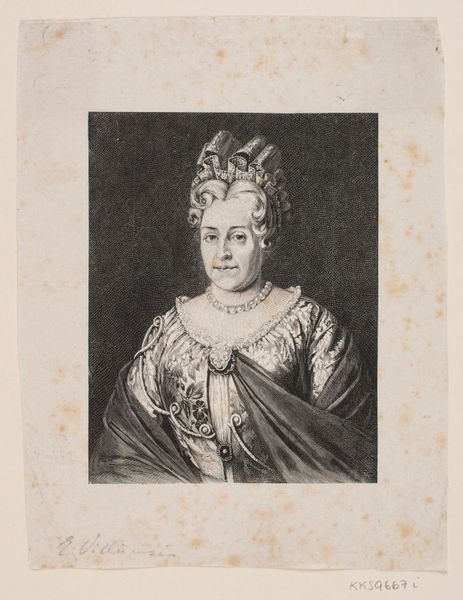
print, engraving
#
portrait
# print
#
history-painting
#
engraving
#
realism
#
monochrome
Dimensions: height 124 mm, width 87 mm
Copyright: Rijks Museum: Open Domain
Curator: Here we have a print, specifically an engraving, made sometime between 1808 and 1874, titled "Portret van Johanna de Waanzinnige," or "Portrait of Joanna the Mad," created by Johann Nepomuk Passini. Editor: It’s immediately striking, isn't it? That delicate rendering... and that faraway gaze. A somber elegance, though quite constrained. One wonders what inner turmoil it reflects. Curator: Engravings like this one would have been mass-produced, intended for widespread circulation. This particular portrait probably served to reinforce certain societal views of Joanna and her mental state, or perhaps just to spread knowledge of this notable personage. Editor: I see it also as capturing something essentially feminine under considerable pressure, and as something not merely mimetic, the engraver has done much in translating into tonal language all that sensitive tension, has subtly suggested that drama through precise and rigorous applications of technique and material... what the tools and print allows here in this emotional narrative feels crucial to how the subject might feel, that there is a felt making is significant. Curator: That’s an interesting observation. The constraints of the medium mirroring her own constrained life, one might argue. It also points to how the labor of printmaking, of reproducing images, helped construct and perpetuate narratives around powerful historical figures. Editor: Yes, precisely! The artist becomes a part of history’s repeating narrative, and there's a collaboration with this subject that the engraver perhaps wasn’t entirely aware of. I also feel her dress and head covering hold equal if not even slightly greater value as an expression in light and dark contrast! The balance feels spot-on. Curator: And from the perspective of a contemporary audience, perhaps this work functions as a point of entry into considering how historical narratives were formed, manipulated, and consumed, via materials such as this. It prompts us to delve deeper, consider our relation to the historical figure, and more broadly to what might seem to be historical “fact”. Editor: I agree completely. An image holding so much history. So many hands contributing their time and resources to allow this briefest instant for a royal queen to stand, if but fleetingly, alive once more, resurrected in time… fascinating.
Comments
No comments
Be the first to comment and join the conversation on the ultimate creative platform.

